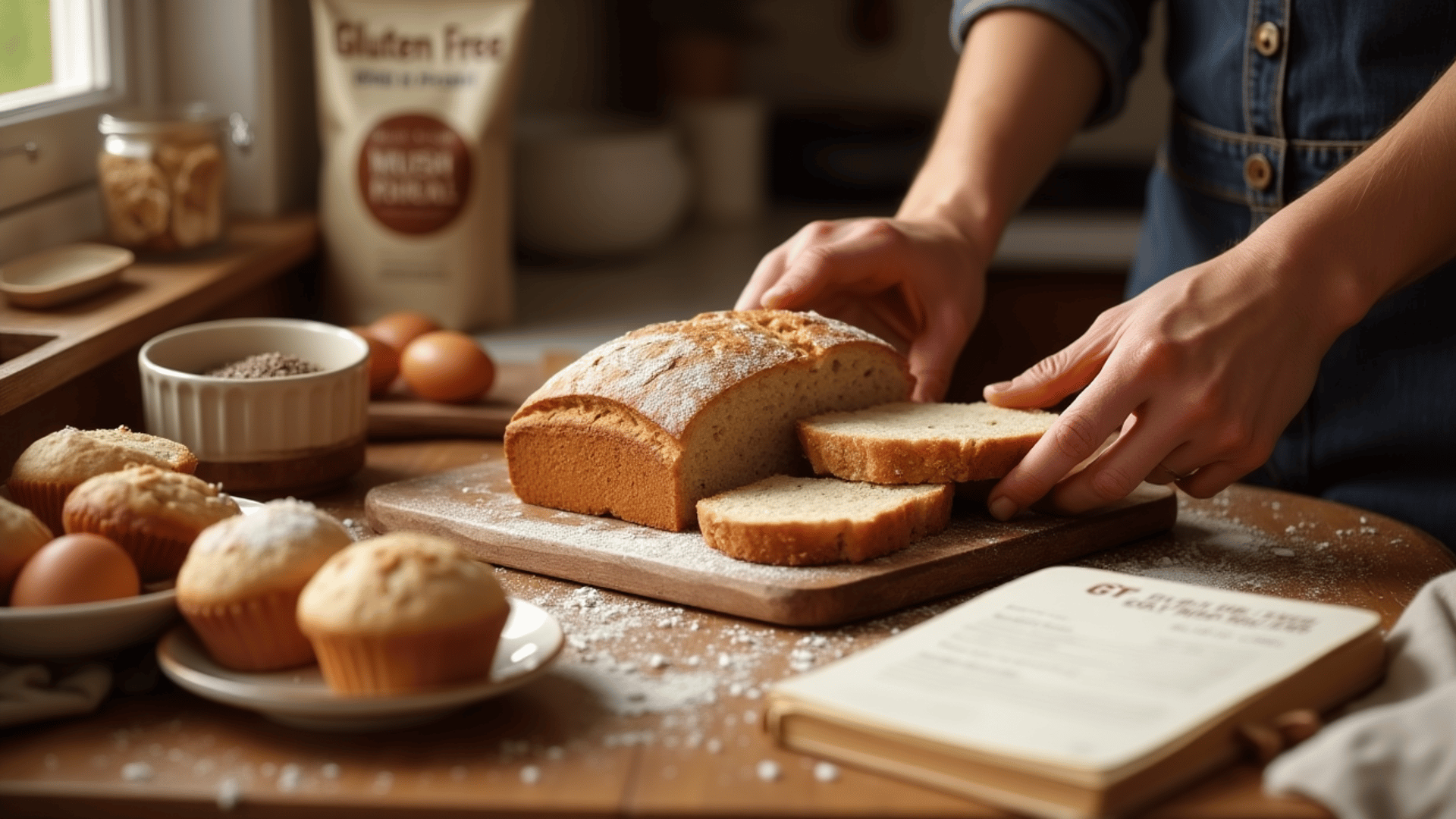
Baking Without Gluten: Tips and Swaps
Want perfect vegan treats? Baking Without Gluten: Tips and Swaps shares 5 easy tricks for baking without gluten. Explore simple swaps today!
GLUTEN-FREE TIPS


So You Wanna Try Gluten-Free Baking? Let’s Dive In 🍪
Let’s be honest—gluten-free baking gets a pretty rough reputation. Dry? Yep. Dense? Often. Fussy? Definitely. But here’s the thing: it doesn’t have to be that way.
Whether you’re baking for someone with celiac, cutting out gluten for health reasons, or just curious about all the hype, welcome to the fun (and surprisingly delicious) world of celiac-friendly baking.
This isn’t one of those complicated, science-lab style guides. It’s more like baking with your gluten-free bestie who’s made all the mistakes, wasted all the expensive flours, and lived to tell the tale. Stick around—I’ll walk you through the flours you’ll actually want to use, common pitfalls (and how to avoid them), and easy tricks to turn your gluten-free bakes from crumbly disasters to total showstoppers.
Why go gluten-free anyway?
Going gluten-free isn’t just for people with celiac or allergies anymore. Loads of folks are skipping gluten to help with digestion, bloating, inflammation, and overall gut vibes. And when you do it right, gluten-free baking can actually be more nutrient-dense (think fiber, healthy fats, and protein-packed flours). Win-win.
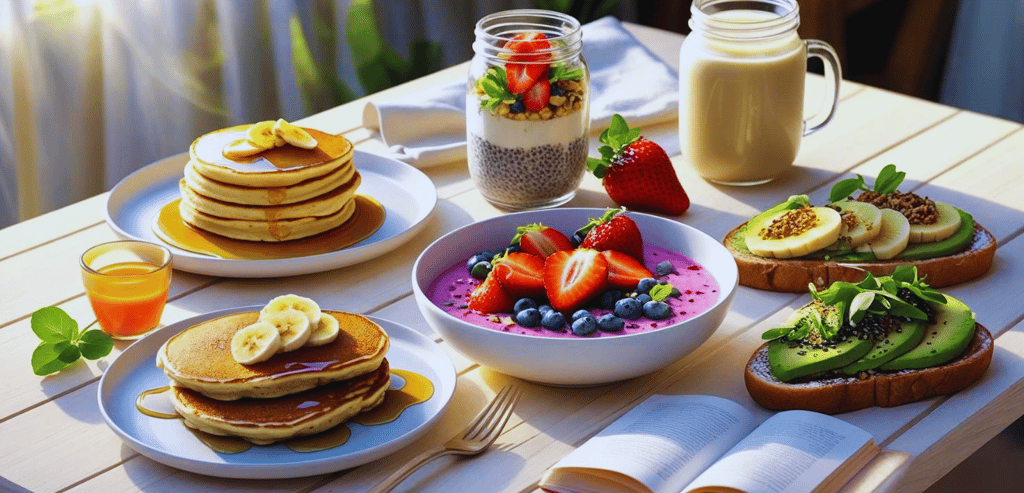

The Struggle Is Real: Common Gluten-Free Baking Problems
Let’s just say, if you’ve ever ended up with a gluten-free muffin that tasted like sand or a loaf of bread that could double as a paperweight... you’re not alone.
Here are some common struggles (and yeah, we’ve all been there):
Dry, crumbly, or gummy bakes: No gluten = less moisture and structure.
Flat bakes: GF breads and cakes can flop without that nice elastic stretch.
Ingredient overload: Why do I need five types of flour for one cookie?!
Cost: Some of those specialty flours ain’t cheap.
Conflicting advice: One blog says "more binder," another says "less binder." What gives?!
Unstable doughs: Ever try to roll GF cookie dough? It's like herding cats.
But don’t panic. Once you know how to tackle these, things get way easier.
Your Gluten-Free Baking Cheat Sheet: What Actually Works
1. Let’s Talk Flours (AKA Your New Best Friends)
You can’t just swap in almond flour for regular flour and hope for the best. Different gluten-free flours do different things—and mixing them is where the magic happens.
Almond Flour: Moist, rich, and perfect for cookies and brownies.
Coconut Flour: Soaks up liquid like a sponge. A little goes a long way.
Rice Flour (white or brown): Light and neutral. A good starter base.
Buckwheat Flour: Earthy and a bit bold. Great in pancakes.
Sorghum Flour: Sweet, soft, and fab in muffins or cakes.
Oat Flour: Soft, mild, and cozy. Great for banana bread or cookies.
Tapioca Flour: Adds chew and helps everything hold together.
Chickpea Flour: Savory and high-protein. Good in crackers and flatbreads.
👩🍳 Pro Tip: Mix and match! One simple homemade blend:
2 cups rice flour
2/3 cup potato starch
1/3 cup tapioca flour
1 tsp xanthan gum
Or go easy on yourself and use a store-bought blend like Cup4Cup or King Arthur’s GF mix.
2. The Secret Sauce: Binders & Leaveners
No gluten = no stickiness. So you need backup.
Binders:
Xanthan gum or guar gum = classic gluten stand-ins
Psyllium husk = chewy bread texture
Eggs = natural and reliable (also adds moisture)
Leavening Love:
Baking powder + baking soda
Add a splash of vinegar or lemon juice to boost the rise
3. Don’t Skip the Moisture Game
Dry cookies? No thanks.
Add moisture-rich ingredients like:
Applesauce
Mashed banana
Yogurt
Pumpkin
Nut butter
Or whip up a chia/flax egg (1 tbsp ground flax or chia + 3 tbsp water). Bonus: fiber and omega-3s!
Also, let your batter chill for 20–30 mins before baking. It helps the flours hydrate and softens everything up.
4. Old Baking Rules? Toss ’Em (Kind of)
Mix all you want: No gluten means no overmixing drama.
Bake lower and slower: GF stuff tends to brown fast on the outside and stay raw in the middle.
Weigh your stuff: Seriously. GF flours can vary a lot by volume.
5. Quick Fixes for Common Fails
Write a short text about your service
Write a short text about your service
Write a short text about your service
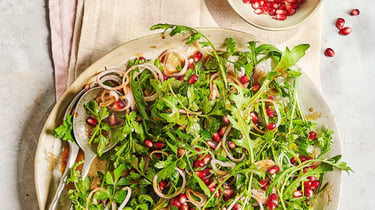

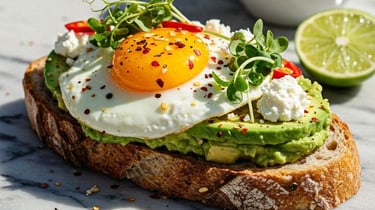


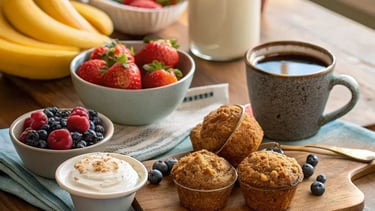
Amp Up the Flavor: Because GF Doesn’t Mean Bland
Let’s face it—some gluten-free stuff tastes like cardboard. But it doesn’t have to.
Sweeten the Deal:
Maple syrup
Honey
Coconut sugar
Spice It Up:
Cinnamon
Nutmeg
Vanilla extract
Almond extract
Citrus zest (lemon, orange... zing!)
Level-Up Technique:
GF Sourdough: Yup, it’s a thing! Use brown rice flour to build your own starter and bake tangy, gut-loving loaves.
Fermentation: Adds flavor and makes stuff easier to digest.
Where to Find Recipes (and People Who Get It)
The internet’s full of gluten-free recipes—but not all of them are great.
Look for recipes with:
Step-by-step instructions
Photos (bonus if they show the batter too!)
Reviews or ratings
Storage tips
🔍 Favorites to check out:
Minimalist Baker
Gluten-Free on a Shoestring
King Arthur’s Gluten-Free Recipes
America’s Test Kitchen GF series
Also—don’t do it alone! Join online groups, Reddit threads (r/GlutenFree is great), or GF Facebook communities to share tips, fails, and wins.
On a Budget? Or Just Over It? These Shortcuts Help
Let’s be real: not everyone has time to become a gluten-free pastry chef. And that’s okay.
Certified GF only: Especially important if you’re baking for someone with celiac. Always check the label!
Buy in bulk: Flour blends are cheaper that way.
Store-bought heroes:
Simple Mills mixes
Cappello’s cookie dough
AWG GF bread
MinusG baking kits
Udi’s whole grain GF bread
They’re fast, tasty, and safe.
A Quick Word on SEO & Generative Engines (If You're Blogging About It)
If you’re turning your gluten-free wisdom into content (hi, fellow blogger 👋), here’s the deal:
Use real, natural keywords like “celiac-friendly baking” or “wheat-free cookies”
Break stuff into sections with clear H2/H3 headers
Add lists, tables, tips, and Q&A style answers
Include real recipe cards with all the details (cooking time, servings, storage, etc.)
Add a “jump to recipe” button for phone users (they’ll thank you)
Also, internal links to other posts, external links to legit sources = big SEO love.
Final Thoughts: Gluten-Free Doesn’t Mean Joy-Free 🧁
Look, gluten-free baking can be a little intimidating. But once you get past the first few flops, it becomes super fun—and honestly? Kinda addictive.
You’ll discover new flavors, play with cool ingredients, and whip up treats that’ll make your friends say, “Wait, this is gluten-free?!”
So grab your mixing bowl, try a new flour, and don’t be afraid to get messy.
You’ve totally got this. And if you ever need backup? I’ll be here with more tips, more recipes, and maybe a batch of chocolate chip cookies.
👉 Ready to get started? Check out my go-to gluten-free recipes and let’s get baking!
Gluten-Free Made Delicious
Gluten-free eating can be balanced affordable, and tasty when built around whole foods. These recipes avoid processed gluten substitutes and focus on naturally gluten-free ingredients
Best Low-Carb Cooking Bundle
Enjoy fast, flavorful low-carb dishes with our curated Low-Carb Collection. Includes staples and recipes designed to fuel your busy lifestyle without sacrificing taste
